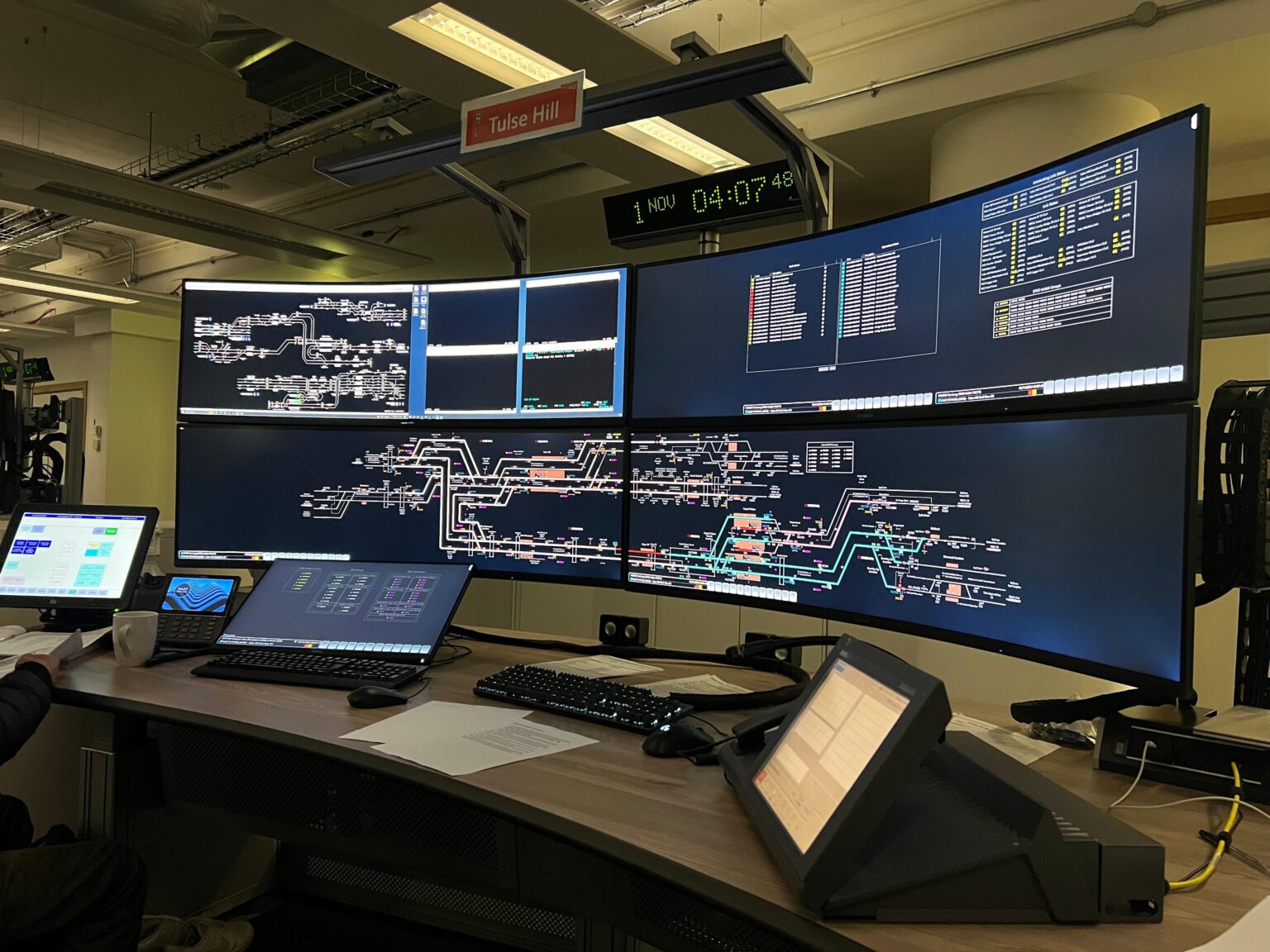- Alstom workstation entered into service on Saturday 2 November
- Work is part of a major package of upgrades to modernise signalling on the lines into London Victoria
07 November 2024 – Alstom, global leader in smart and sustainable mobility, has delivered a new signalling system for South London which aims to improve reliability for passengers travelling in and out of Victoria railway station – the fifth busiest in the UK.
In the early hours of Saturday 2 November, Alstom’s Digital and Integrated Systems (D&IS) team commissioned into service the new Tulse Hill Smartlock Interlocking system. It is controlled by Alstom’s latest generation Modular Control System Infinity (MCS-I) workstation, which connects the lineside railway to Network Rail’s Three Bridges Rail Operating Centre. This enables remote signalling control and automatic route setting.
Alstom’s new signalling system is now in use across Tulse Hill, Peckham Rye and Crystal Palace, to improve reliability for Southern, Thameslink and London Overground passengers, as well as for freight services. The new signalling system replaces the old equipment which had controlled the movement of trains in the areas since the early 1980s.
“I am incredibly proud and humbled to have been able to lead such a driven, committed and determined team that has achieved this milestone, and I would like to extend my thanks to all those involved,” said Peter Mills, Victoria Phase 4 Project Director at Alstom.
He added: “This commissioning will set the tone for Victoria Phase 5 to introduce further Alstom hardware into Three Bridges Rail Operating Centre and cement Alstom as a key delivery partner in the Southern Region going forward through Control Period 7 and into Control Period 8.”
As part of the Alstom commission, engineers installed 23 kilometres of new signalling, power supply and telecoms cables, 61 new signals, upgraded power supplies and removed the old system for recycling.
“It’s vital that we continue to invest to modernise our assets and give passengers the delay-free journeys they expect, and I want to thank our teams for the work they’ve carried out as well as passengers whose journeys were affected,” said Lucy McAuliffe, Sussex Route Director at Network Rail.
She added: “Signalling upgrades between East Croydon and London Victoria in 2022 saw delays cut by more than half, and we hope this latest phase of signalling upgrades in the Crystal Palace, Tulse Hill and Peckham Rye areas will improve reliability and help contribute to improving the performance of this important stretch of railway.”
An interlocking system authorises train movement and ensures safety conditions are met. It operates points, signals and level crossings, and checks rail sections are free, establishes routes and prevents conflicts.
In Alstom’s digital interlocking the technology transmits train control information digitally, via the IP network, providing enhanced coverage. Signals and points can be controlled at much greater distances, enabling capacity and processing speed, fewer cables and the possibility for data and digital analysis-driven maintenance.
Alstom’s D&IS team are involved in the activities of providing systems, equipment and services for the transport sector, specialising in rail control systems and infrastructure. To date, Alstom has been involved in some of the UK’s most significant and innovative rail projects including installing Crossrail (Elizabeth line) signalling and slab track works, East West Rail Connection Stage One, European Train Control System (ETCS) on the Great Western Main Line, ETCS Baseline 3 R2 First in Class onboard installations and High Speed 1 (HS1).
